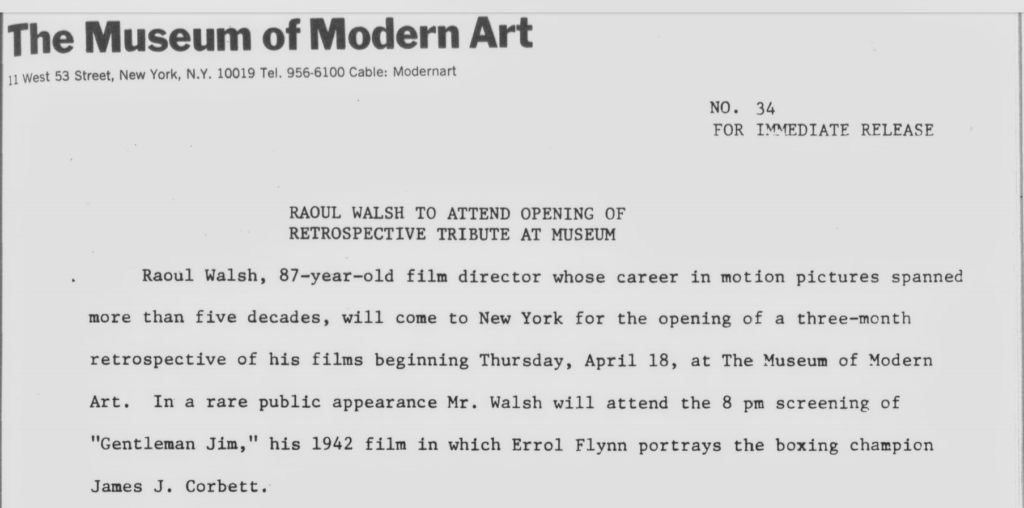
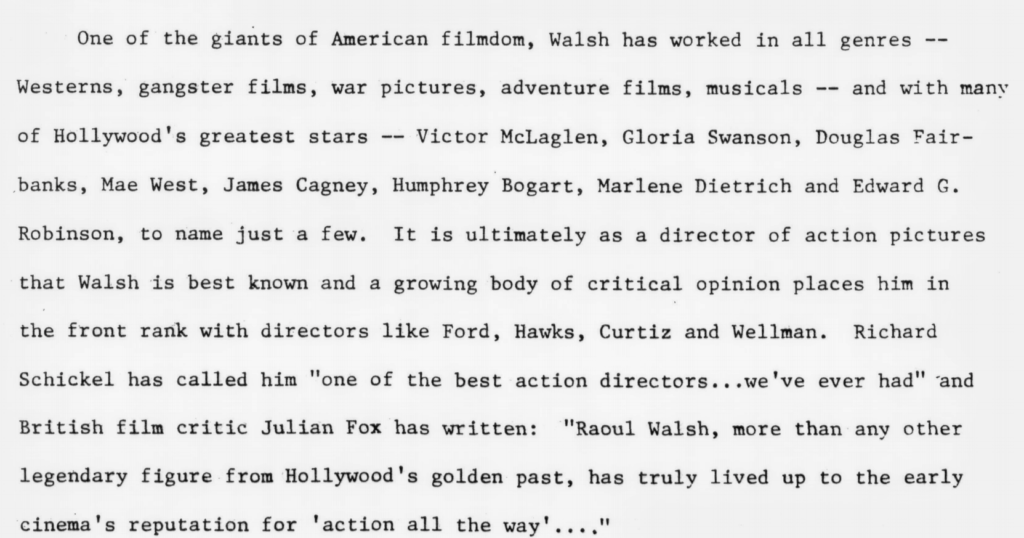
Actor
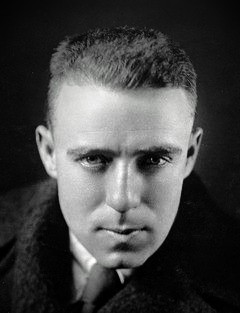
…
Director
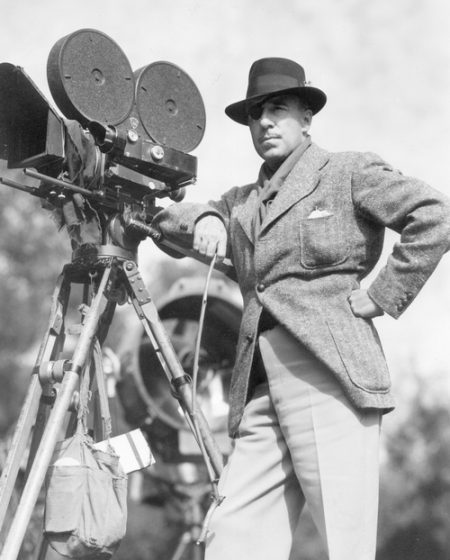
…
Friend of Flynn
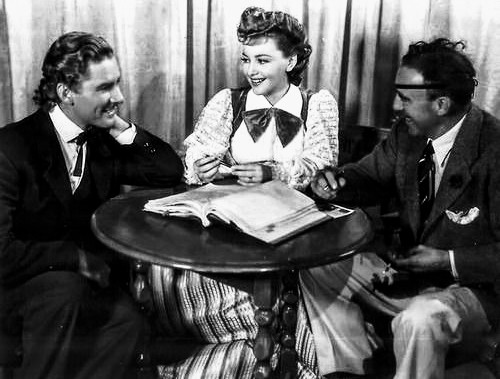
…
…
— Tim
Lafayette, Indiana – Four’s a Crowd Grand Opening

“The cream and black tiles glistened and the neon sign spelled out its welcome—it was September 1, 1938 and the new Lafayette Theater, with its modern Art Deco design, was opening! The line stretched down the block as people waited to see Errol Flynn and Olivia DeHavilland in “Fours A Crowd.” Over 70 years later, people are still lining up for events at the Lafayette Theater.”
…
Lafayette Theater – Suffern, New York – Dodge City
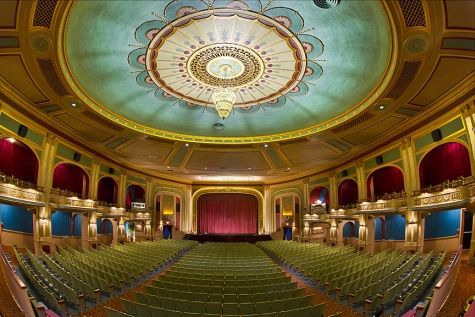
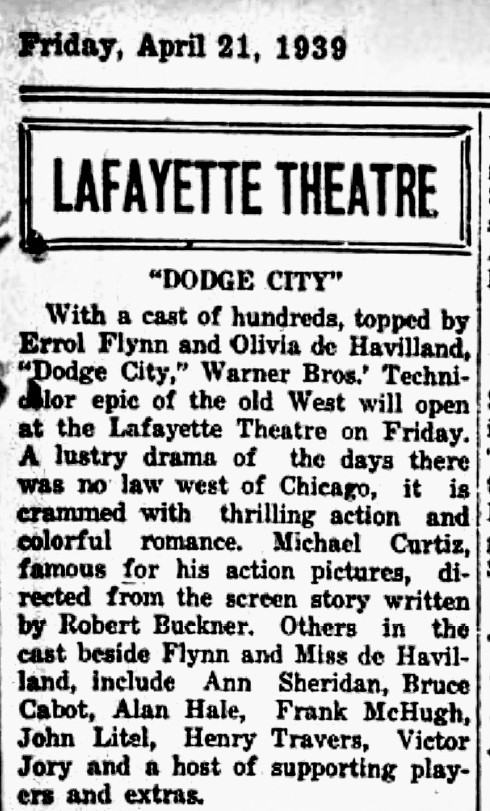
— Tim
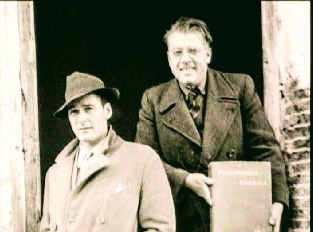
By United Press
Hollywood, April 21, 1937
ACTOR DENIES SAYING STARS RAISED FUNDS
Report That $1,500,000 Given By Certain Film Players to Loyalists Claimed False
An Interview with Errol Flynn In Barcelona Spain, in which the film actor and soldier of fortune purportedly told of helping raise a $1,500,000 fund in the Hollywood film colony to aid the loyalist forces, came under the scrutiny of the Knight of Columbus today. Thomas B. Flanagan, secretary of the Los Angeles council of the Knights of Columbus, said he was sending a report on Flynn to John J. Rossborough, state deputy of the order at Oakland, California, and to the national headquarters of the organization’s newly launched “antiradical” campaign at New Haven, Conn.
The purported interview was published in the Hollywood Reporter, a film trade paper. The Reporter stated the interview was filed to them by “our regular Barcelona correspondent.” The part to which the Knights of Columbus reportedly found most objection to follows:
SAYS FUND RAISED
“Is it true that money has been collected in Hollywood to help the Spanish government?’ asked the Reporter. “‘Yes,’ said the actor, ‘Fredrick March, James Cagney and I were the initiators and $1,500,000 has been raised so far”.” Flynn, husky film leading man and husband of Lili Damita, French actress, has been in Spain as a roving correspondent He was reported wounded by a machine gun bullet in dispatches from Madrid which later developed to be erroneous.
The Hollywood Reporter’s dispatch upon his arrival at Barcelona, strong loyalist headquarters, further stated: “When Errol Flynn arrived in Barcelona he was greeted by the “commissioner of public spectacles, J. Carner Rlbalta, who introduced him to the “commissioner of propaganda” of the Catalonian government, Jaime Miravitles, and the heart of the cinema section the same department, Juan Castanyer.
While in Barcelona, Flynn was considered a guest of honor of the Catalonian government and all facilities were accorded him. “In an interview with the press, Flynn said his visit to Spain was prompted by a desire to ascertain the truth regarding conditions here. “Asked by the press boys what was the general impression in the United States about the war, he replied: “That’s it, the confusing news and the fact that all the American press is in the hands of powerful trusts made me decide to take this trip to see with my own eves what is really happening and write a series of articles for publication.”
The dispatch ended:
“Flynn was accompanied by his old friend, Dr. Hermann F. Erben, a well known member of the American Communist party.”
— Tim
“Errol Flynn” by Winters Island
Released one year ago today, on April 20, 202

— Tim
“The Adventures of Errol Flynn,” premiered on TCM on April 5, 2005, encoring two weeks later on April 19.
“Imbued with the same swashbuckling spirit as its subject matter, this Turner Classic Movies documentary qualifies as must-see TV for anyone weaned on the cinematic exploits of Errol Flynn, whose life on and off the screen makes for a great deal of fun.”
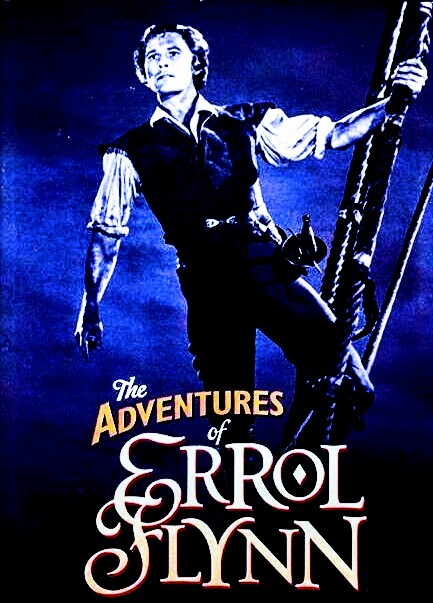
THE SWASHBUCKLING LIFE OF ERROL FLYNN
Washington Post
By Tom Shales
April 5, 2005
We may as well retire the word “dashing,” since nowadays it applies to nearly no one. The adjective fits icons and movie stars and royal personages who exist only in the past.
Of all the dashing figures to swing across the movie screen in Hollywood’s golden age, Errol Flynn has to have been the dashingest, at least among candidates from the sound era. He may not have cut a wide swath, exactly, but he cut a rambunctious one. He was one of the screen’s most magnificent rascals, wittily self-aware yet never self-adoring.
Turner Classic Movies pays jaunty and justifiable tribute to Flynn this month with a splendid 32-film Flynn festival, mostly movies made at Warner Bros. Studios, but shamefully omitting the 1943 Warner spectacle “Thank Your Lucky Stars,” in which Flynn sang and danced.
We’re all used to hearing that in real life, this or that performer had no resemblance to the image projected on the screen. But as the word “Adventures” in the title suggests, Flynn was larger-than-life whether on the screen or off it. He was determined not to bore or be bored, and he perhaps exhausted himself in that pursuit, dying at the age of 50 but looking much older.
Even the simplest details of Errol Flynn’s life seem exotic: He was born in Tasmania, of all places, in 1909, and just sort of stumbled into movies in 1933, when he played Fletcher Christian in the sea saga “In the Wake of the Bounty,” Australia’s first talkie.
Two years later, Flynn landed what couldn’t quite be called a plum role in a Hollywood film: He played an impeccable corpse in “The Case of the Curious Bride,” a Perry Mason mystery. There was, as the saying goes, nowhere to go but up, and Flynn went there with a string of swashbuckling, supremely entertaining classics, of which the most memorable and rousing was “The Adventures of Robin Hood” in 1938.
Flynn and the Technicolor tights fit each other so perfectly that one can only wonder what mogul Jack L. Warner had been thinking or drinking when, years earlier, he’d decreed that James Cagney, not Flynn, would be the perfect guy-in-green.
Many other versions of “Robin Hood” have been filmed in the years since, but nobody ever played Mr. Hood with greater gusto, charm and spirit, as the sumptuous clips make clear. According to the documentary, Flynn handled his own sword fighting in the film’s bravura duel with pernicious popinjay Basil Rathbone.
Olivia de Havilland made eight films with Flynn and still seems smitten, as when she recalls the impression he made when first they met on the set of “Captain Blood.”
“Ohhhhh, ohhhhh,” she murmurs, summoning her initial reaction with such enthusiasm she almost gets the vapors. “He is the handsomest, most charming, most magnetic, most virile young man in the entire world,” she says, and she was thus willing to forgive him anything, even the time he left a dead snake in one of the voluminous gowns she wore in “The Charge of the Light Brigade.”
Unfortunately, the documentary makes the error of attributing the still-thrilling eponymous charge that ends the movie to director Michael Curtiz, who directed several Flynn films, including most of this one. But the logistics and filming of the actual charge (intercut with quotations from Tennyson’s epic poem) were handled by B. Reeves “Breezy” Eason, the legendary action master whose credit was usually “second unit director.”
The mustache Flynn wore in “Charge” and most of his other action films added the perfect rakish touch to his appearance. Rakishness came naturally; so did a rebellious arrogance. Producer Hal B. Wallis (“Casablanca”) confirms the impression that Flynn gave studio bosses as many ulcers and migraines as he could: “He was the same likable rogue from the beginning right on through his career. He’d make these demands, he’d disappear, he’d come back to work and he would have the top brass at the studio apologizing to him!”
He loved sailing and playing tennis and, unfortunately, shooting up morphine. In very rare footage from 1955, we see Flynn lampooning himself on TV’s “Martha Raye Show.” His days as a lean, limber, devilishly handsome movie star were behind him, but he could even be irreverent about that. The producers begin the documentary with a priceless clip from “The Steve Allen Show,” satirizing “To Tell the Truth.” In this case, the announcer asked for “the real Errol Flynn” to stand up, and since the faux Flynns were a fatuously suave Louis Nye and a quivering Don Knotts, the genuine article was amusingly obvious.
There’s a poignancy to the clip, though, especially when one recalls that Flynn would be dead within a few years. He was long past his days of tights and tree-climbing, looking as though he had left his 40s behind several eons ago. The situation clearly inspired Richard Benjamin’s raucously evocative comedy “My Favorite Year,” which is about a fading old rake. Peter O’Toole, another of the last-of-the-dashers, appears to have nearly as high a time being Errol Flynn as Errol Flynn did.
Separating the actual from the mythic in Flynn’s life isn’t always easy — nor, arguably, at all necessary. J. Edgar Hoover, with typical perversity, started investigating Flynn early in the ’40s, and decades later, a biographer would scrounge up allegations that Flynn had loopy Nazi leanings all that time. In 1942, he faced an apparently trumped-up charge of statutory rape by two Hollywood party girls. Says Flynn’s daughter Deirdre, among many Flynn intimates interviewed: “My father never had to ‘rape’ anybody. Women chased him.”
“I have a zest for living,” Flynn himself once said, “yet twice an urge to die.” Die he did, on Oct. 14, 1959, a few years after giving a hauntingly dissipated performance in “The Sun Also Rises.”
Film of Flynn as himself, near life’s end, shows him looking wan and chubby, and yet some of the dash still survived, apparent in the wicked twinkle of his mischievous eyes.
There was no indication, on the other hand, that he suffered even a hint of regret. “I’ve loved it,” he said of his life, “every minute of it.” You may feel precisely the same way about watching “The Adventures of Errol Flynn.”
— Tim
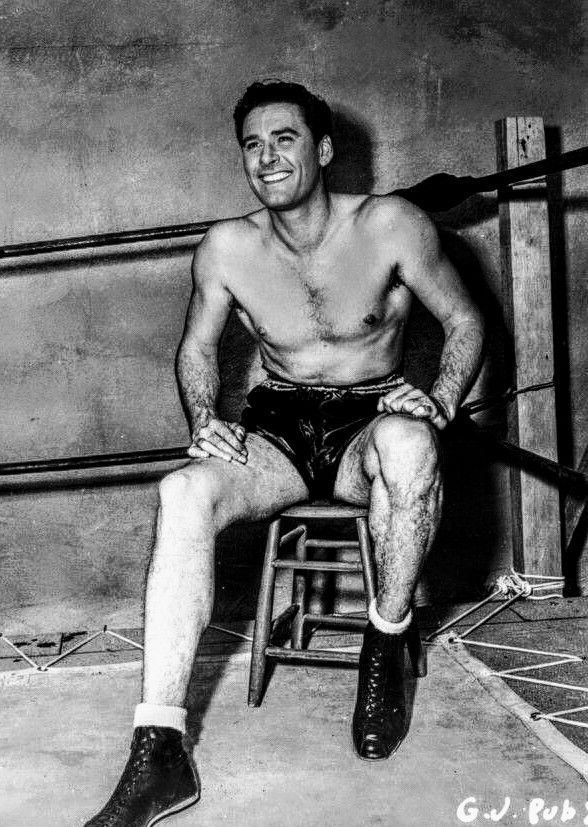
GENTLEMAN FLYNN
THE FRONT ROW
NEW YORKER MAGAZINE | 2011
Transcript of “Richard Brody on Raoul Walsh’s “Gentleman Jim” (See Video in red link above.)
[Gentleman Jim’s manager, Billy Delaney/William Frawley] Hey, what’s the idea Choynski, where’s your boxing gloves?
[Joe Choynski’s Manager] He lost ’em, that’s what he did, He lost ’em
[Referee] Yeah, well he can’t fight with those.
[Billy Delaney] Aw, nix on that. We won’t fight you without regulation gloves.
[Errol/Gentleman Jim] Wait a minute. Wait a minute, Billy. He can use gloves, no gloves, bare knuckles. He can use a baseball bat if he wants. Let’s get started.
[Richard Brody] I’m Richard Brody and this clip is from Gentleman Jim, a 1942 film directed by Raoul Walsh. It’s a biopic about James J. Corbett, a late 19th century boxer who came
from a rough Irish immigrant family in San Francisco, and yet brought a new level of refinement and gentility to the sport of boxing.
[whistling]
It stars Errol Flynn as a young man with an exuberant excessive swagger. He starts out as a bank teller who had cultivated his pugilistic skills through family brawls and hasn’t yet had a chance to put them on public display. At the same time, he has social climbing ambitions and makes use of an unanticipated connection with an heiress to get himself introduced into the Olympic Club. There, he finally gets to show off his skills and become something of a local celebrity.
Walsh takes pleasure in the rough-hewn media
of illegal prize fighting. The movie is filled with a jaunty and exuberant rowdiness.
[John L. Sullivan] I’ll meet any man who will stand on his own two feet, and if you had about 30 pounds more on you, you’d be the first one sir.
[Errol] I’ll return the compliment Mr. Sullivan, if you’d fight me, I’d just wish you were five years younger.
[Sullivan] What do you mean by that?
[Errol]Not much fun winning the championship from a guy who’s practically tripping over his beard.
[Richard Brody] In this scene, Corbett is trying to get himself a match for the heavyweight title
with the great fighter, John L. Sullivan,a harsh, aggressive, somewhat crude Boston man
who was intensely proud and nearing the end of his career and had no intention of fighting the young peacock. ..But Corbett applies his non-boxing skills to find his way into the ring with him.
[Sullivan] Call the newspaper boys in. I’ll fight that blabbermouth anytime, anywhere.
[crowd cheers]
[Richard Brody] There’s something special about the character of Corbett. He seems peculiarly modern, in fact, even more modern than Walsh imagined. Unlike the other boxers he faces,
he isn’t just a brawler, he’s a dancer, he’s a master of fancy footwork. And with his fancy footwork comes high-flowing verbiage, the ability to use taunting to get under his opponent’s skin and, with his confection of his public image and his careful attention to his appearance, Corbett seems nothing less
than a precursor to Mohammad Ali.
[boxing bell rings]
[crowd cheers]
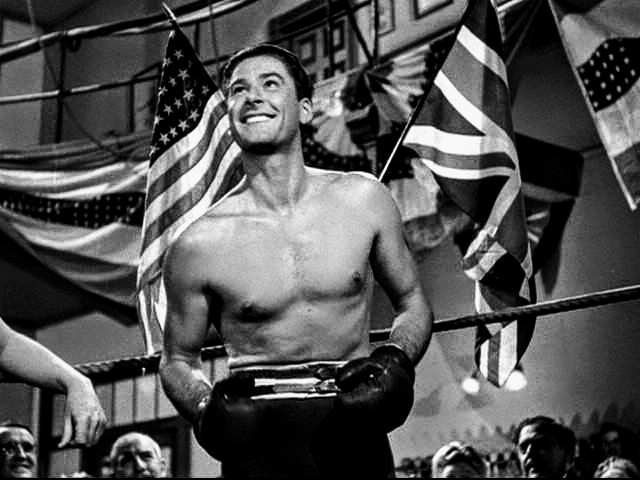
— Tim
The New Yorker
April 18, 2005
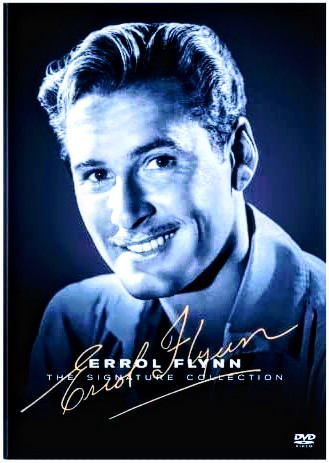
IN LIKE FLYNN
No film star ever bettered Errol Flynn in tights, but he was the soul of insouciance even when he wore a cavalry uniform or bluejeans. That’s the revelation of “Errol Flynn: The Signature Collection” (Warner Home Video), which features the athletic, rakish star not just as an inspired Sir Francis Drake take-off in the vivid “The Sea Hawk” (1940) and as an uncharacteristically stiff Earl of Essex in “The Private Lives of Elizabeth and Essex” (1939) but also as a gallant General George A. Custer in “They Died with Their Boots On” (1941) and as a gritty frontier sheriff in the colorful Western potboiler “Dodge City” (1939). The set includes a surprisingly frank biographical portrait, “The Adventures of Errol Flynn.”
But the key film in the set is the sweeping, ebullient swashbuckler “Captain Blood” (1935). Three years before he became the most dashing Robin Hood yet (in “The Adventures of Robin Hood,” available on a separate Warner DVD), the young Australian actor, in his Hollywood breakthrough, proved his panache at righting wrongs. In this film, based on Rafael Sabatini’s 1922 novel about seventeenth-century pirates of the Caribbean and directed by Michael Curtiz, Flynn is Peter Blood, a peaceful doctor who makes the mistake of treating a rebel during the tumultuous reign of King James II and ends up a slave in Jamaica. The ravishing Olivia de Havilland (Flynn’s frequent co-star) plays the feisty, sympathetic niece of the tyrannical British slave owner; Blood and a barracksful of enslaved rebels (good men all) make their escape by stealing a Spanish ship and becoming buccaneers.
Flynn combined aristocratic dash with rebel flair—in “Captain Blood,” he defies the ruling order with absolute confidence. At one point, de Havilland says, “I believe you’re talking treason.” Flynn replies, “I hope I’m not obscure.” (This exchange has a close echo in “Robin Hood,” when de Havilland exclaims, “You speak treason!” and Flynn responds, “Fluently.”) In his autobiography, “My Wicked, Wicked Ways,” Flynn wrote that “youthful and virile roles” like cowboys and swordsmen “require gusto and genuine interest—such as I had felt at the time I was making ‘Captain Blood’ and ‘Robin Hood.’ ” He’s right: in these movies, his exuberance irradiates the screen.
— Tim